When you think “pirates,” what’s the first thing that comes to mind? Naval combat, obviously, but also sword-fighting, swagger, burying hidden treasure, exploring deserted islands, and maybe even some fantastical mysteries. There’s the camaraderie from interacting with your ship’s crew as they hoist the sails, plug leaks in the hull and celebrate after a day of plundering. However, the intrigue and deception of a potential mutiny also lingers. Pirates could go from being best friends to stabbing each other in the back instantly, but it provides a compelling connection.
Now, strip away or dumb down almost every aspect of the above. Tone down the nuances of naval combat and exploration, and top it off with a gameplay loop that gets repetitive about an hour or two in.
[embedded content]
“Can you rebuild your life and maybe make a name for yourself? Of course, because it’s not uniquely your story – plenty of other “chosen ones” controlled by other players linger in the area.”
That’s Skull and Bones – a vapid machination meant to capitalize on any nostalgia, wrapped in a live service structure stuffed to the gills with tedious and repetitive gameplay. Perhaps the most shocking thing about it is the few bright spots which could have led to a good game, even if it did retain the microtransactions, World Events, end game, Leaderboards and other live-service buzzwords. Alas, it’s not to be.
Before he reportedly left the studio last year, game director Ryan Barnard said Skull and Bones isn’t a “narrative-driven game,” which isn’t to say there’s no narrative. Instead, the team uses it to “build the entire world lore” and let players “create their own stories” to “choose the type of pirate they want to be.” Remember that last part.
The story sees the player on the Exeter, surviving an ambush and being saved by two other crewmates. You start with almost nothing – the piddly Dhow is susceptible to shark attacks, and other survivors who wash up nearby are more keen on drowning their sorrows than continuing. However, you have the glint of something greater in your eyes and thus embark for a nearby Pirate Den to meet the Kingpin – John Scurlock.
Can you rebuild your life and maybe make a name for yourself? Of course, because it’s not uniquely your story – plenty of other “chosen ones” controlled by other players linger in the area. As common as it can be in live-service titles, it really does shatter the immersion here.
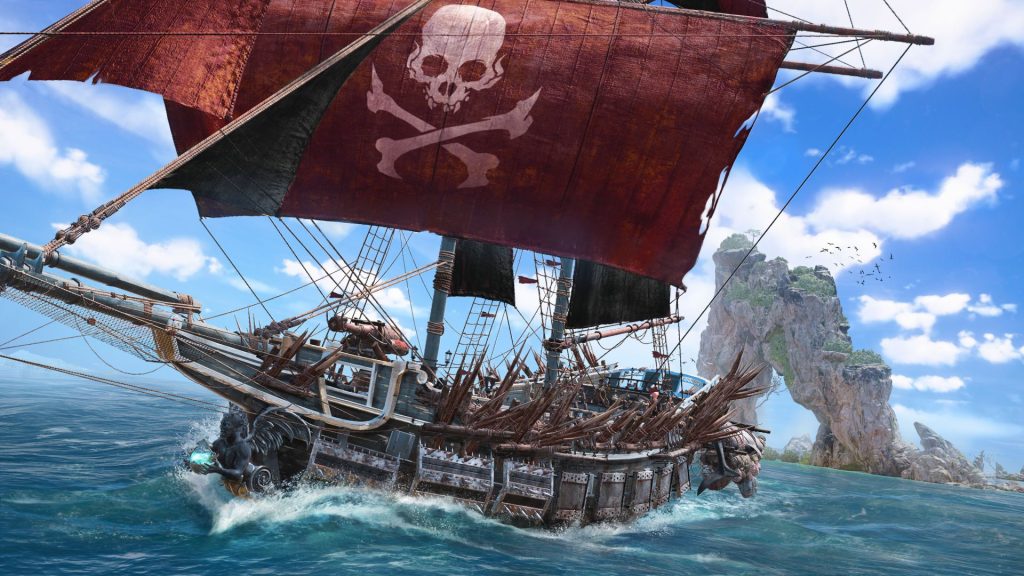
“There’s relative freedom to go almost anywhere, though level gating and hostile elements prevent you from venturing too far from home.”
Throughout Scurlock’s den are other NPCs like the Blacksmith, Commodities Vendor, Ship Builder, Carpenter, Refiner and Vanity vendor. Despite some hints of personality, their occupations are more or less their identities – they don’t contribute much to the plot beyond questioning your abilities and eventually acknowledging your presence. Scurlock’s “story” is about coming up from nothing and working for someone else who allied himself with another military. There are also rats and traitors, and by the time I got to the so-called twist, it was off to the East Indies to meet the Admiral of the Unbound.
Her story is somewhat more interesting, but there’s no development or change to anything. Your impact is negligible – even the dialogue choices mean nothing. You could ascend to Kingpin status and become just another blip on the Leaderboard, but we’ll get to that.
The point is, I didn’t feel like I built a rapport with any character. The ones with interesting stories, like Yanita and Houma of The Helm, are barely above being vendors and dialogue dispensers. Scurlock might as well not exist by the second half of the game. Maybe they’re expanded on later, but since it’s not on the roadmap, I wouldn’t hold out hope.
With your first ship and crew in hand, it’s off to complete a Contract. There’s relative freedom to go almost anywhere, though level gating and hostile elements prevent you from venturing too far from home. You can attack and destroy other ships or board them for additional rewards. There’s also mining, gathering and breaking open shipwrecks for resources via a timing-based mini-game.
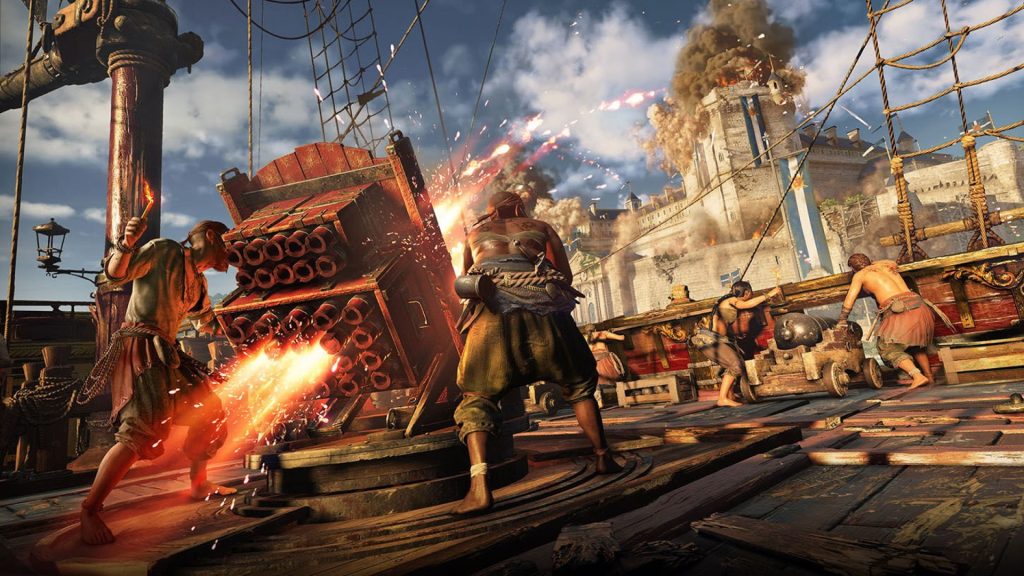
“The direction of the wind, which can bolster or reduce your speed, is also a factor – left alone, it can steer you off course.”
As you discover settlements, you can trade or plunder them. The latter initiates a wave-based activity where you destroy structures and reinforcements from the same faction. Outposts offer different traders to interact with, who may have unique Contracts. Otherwise, they serve as little more than smaller bases to deposit materials, cook food and light Pirate Bonfires for temporarily increased stamina regen.
Sailing feels about right – it’s easy to control while offering some nuances to keep in mind. Your sail has three stages – slightly unfurled, which is the slowest speed; moderately unfurled, a moderate speed but also regenerates a bit of Stamina over time; and fully unfurled for maximum speed but constant Stamina drain.
Turning at max speed is tough, so hoisting the sales before unfurling them again is key for maneuverability. The direction of the wind, which can bolster or reduce your speed, is also a factor – left alone, it can steer you off course. The waves make things slightly bumpy at the best of times and catastrophic during harsh weather when Rogue Waves emerge.
Combat centers on multiple gun emplacements, from standard cannons to rocket launchers and flamethrowers. Depending on the ship, you can reap different benefits – Demicannons are great for close to mid-range damage and pair well with the Brigantine’s ramming damage. There are also Bombards and Mortars, well suited for the Padewakang and its chance to trigger an additional explosion on hits with explosive weapons. With multiple types of weapons in each category, some able to inflict status damage, a decent number of options are available initially.
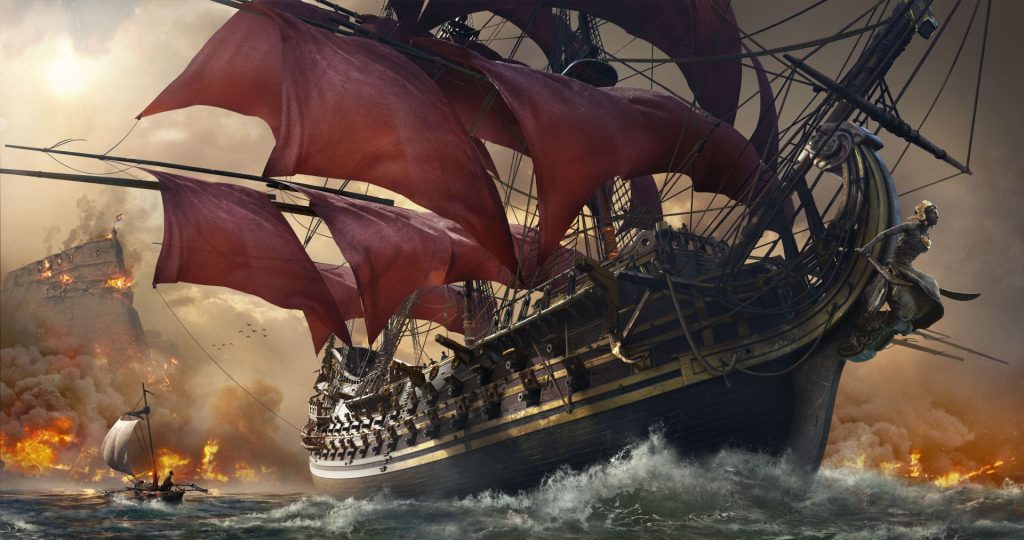
“It’s not too complex and sometimes feels lacking in terms of addictive hooks, but the combat works well enough.”
Unfortunately, Skull and Bones opts for the dreaded “Power” system, or Rank. Each ship has a Rank, and equipping higher-level gear and weapons increases it further. Higher Ranks mean more health and damage, which means you’re encouraged to equip whatever makes that number go up – even if you don’t particularly like the weapon type. It does mellow out after reaching Kingpin status, especially as stronger weapons are doled out in Contract rewards and chests while leveling up.
Still, given that there are only four viable ships for the late-to-end game, the build variety isn’t the best. Nothing stops you from slapping almost any weapon you like onto a ship and making it work (as long as your Rank doesn’t suffer). The standard options help the most, but the higher rarity loot forms the end-game chase, thanks to their specialized perks and higher damage.
When out on the high seas, especially during chaotic weather and battling multiple foes, combat can be fun. Tracking the course of shots, bracing for impact, and those up-close skirmishes where both ships exchange blows immerse you in the action. There’s also some finesse in nailing precision hits while approaching a target, switching to Demicannons for close-range damage and then sailing by, bombarding your target from the back (or boarding them to take the ship). It’s not too complex and sometimes feels lacking in terms of addictive hooks, but the combat works well enough.
The problem is the lack of variety in the gameplay. You transport cargo from point A to point B, eliminate some targets at point C, and maybe plunder settlement D (which also boils down to killing enemies), and maybe dig up some treasure by continuously pressing Triangle or Y. Even if you enjoy the combat, it becomes mind-numbingly repetitive after a point due to lackluster objectives.
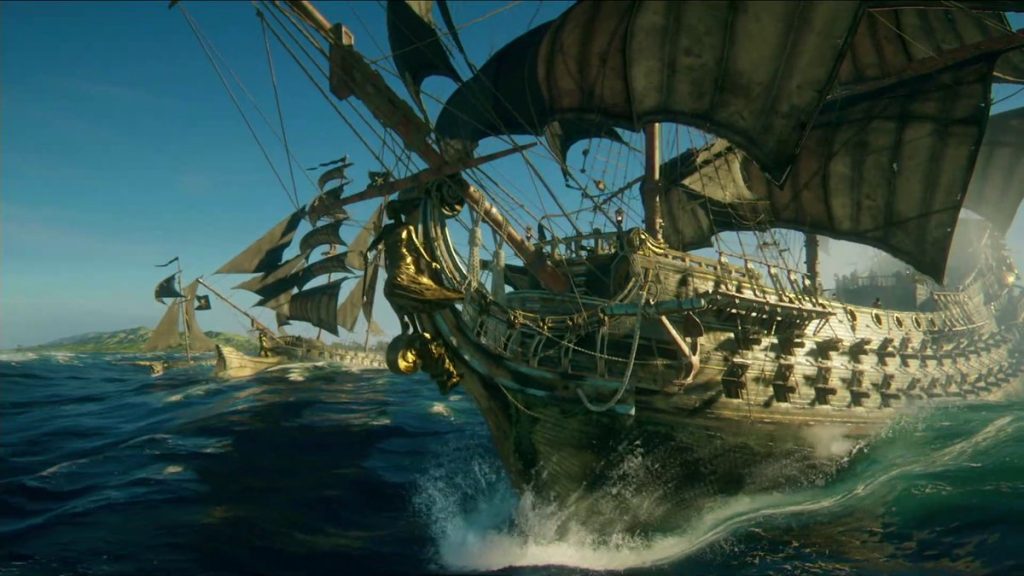
“While one could say repetition is a core part of the loot-driven genre, never mind live-service titles, at least other games try to leverage the gameplay in creative ways or introduce other things to do.”
Even the on-foot exploration feels exceedingly dull – your character is little more than a vehicle to drop off a delivery or speak to an NPC (and occasionally dig up some treasure). There are some genuinely cool-looking outposts relegated to these faux social hubs that are little more than fast travel points or places to store your materials.
While one could say repetition is a core part of the loot-driven genre, never mind live-service titles, at least other games try to leverage the gameplay in creative ways or introduce other things to do. The whispers of rumors about a ghost ship and sea monster are somewhat different from everything else, though the former is irritating with its constant teleporting. However, they’re not deep enough, and once their Contracts are complete, they become dailies, with some of the best items requiring weeks of farming their specific materials. Live service for the win.
You could also hunt sharks, alligators and other creatures for resources to use in recipes, though that requires the Dhow. Blowing them up with a regular ship and looting their corpses is often faster, though. The Contracts forcing you to use the Dhow are the only real motivators – otherwise, why roll around with one when most of the lucrative opportunities require firepower?
There are also Investigations, which encourage figuring out some things. The tale of Bloody Bones, who took up piracy to avenge her sister could have been something interesting, yet it’s little more than written notes and comments from that one first mate who blabbers about coconut jam and Durians. The repetitive objectives that I’ve already done hundreds of times over add insult to injury.
“The journey to sail to a point on the eastern side of the world was so dull that – no joke – I dozed off twice. Maybe it’s a testament to how relaxing sailing can be.”
The same goes for the World Events, which involve destroying a fleet of ships and the Elite Captains. Then there are the Bounty Targets akin to Elite Captains but much tankier and more challenging to solo. These are mildly different versions of destroying enemy ships and don’t offer enough unique tactics to liven up the pace.
Further adding to the snooze-fest is the sheer amount of boring sailing for more than the first half of the game. When more opportunities and resource nodes become available over time, and you have a faster ship, and there’s fast travel, it’s not as bad – still repetitive, but not awful. However, the early going is something else. The journey to sail to a point on the eastern side of the world was so dull that – no joke – I dozed off twice. Maybe it’s a testament to how relaxing sailing can be.
At some point in the story, you’re introduced to The Helm – a not-so-secret faction which serves to smuggle Contraband. The objective is to obtain materials like Poppy Seeds and Sugar Cane from suppliers, turn them into Contraband and sell them to interested buyers. The latter involves sailing out to locations, slaying any Rogues or Privateers that try to stop you.
However, as a Kingpin, you can acquire Manufactories in Hostile Takeovers. These events are on a timer and work similarly to settlement plunders, except ships from various enemy factions and other players can attack. Take them all out to build progress, and the Manufactory is yours.
“However, you’re also essentially waiting every hour for these Manufactories to produce Pieces of Eight and then collect them since there’s limited storage.”
As it produces Contraband, speeding up if you supply Silver, it generates Pieces of Eight, the end game currency. Once full, it’s off to the Manufactory to get the Pieces and transport them to a nearby Pirate Den. Other players and factions can attack you and steal them during this. Pieces of Eight can upgrade your Smuggling Empire or purchase items from the Black Market. Certain Manufactories also have a chance to produce higher-tier Contraband, which garners more currency.
Overall, there are a few problems with this end game, not the least of which includes mandatory PvP against other players. The rate at which Pieces of Eight are obtained is pretty abysmal, and having to go to every Manufactory to transport them back to a Pirate Den is just another tedious step on top of everything else. The idea is probably to hit up all the Manufactories in a set area and then return, risking your hard-earned currency but saving time.
However, you’re also essentially waiting every hour for these Manufactories to produce Pieces of Eight and then collect them since there’s limited storage. How this location can’t store more than 48 of these Coins initially is beyond me, but it’s an annoying mobile game-like system that pushes you to log in constantly.
Could you do other stuff, like making deliveries for a measly 25 Pieces of Eight each? Sure, and the Black Market has tons of items to unlock. The prices are fairly hefty from the outset – if you had three Manufactories producing 25 Pieces per hour and played for 24 hours, you would have enough for a handful of unlocks. This also depends on having enough Silver at all times to fund the Manufactories and not being sunk by other players.
“Other end-game activities include Cutthroat Cargo, which involves stealing a map and locating the treasure before other players sink you and take it for themselves, and Legendary Heists.”
Many of the best weapons and hull armor, not to mention cosmetics and other goodies, are tied to the Black Market, so there’s your end-game grind. Upgrades improve the amount earned, but these also require Pieces of Eight and each subsequent upgrade costs more. Best of all, they reset at the end of the season, which is coming up soon. Maybe it’s poor timing, but even as a grind required every season, it’s exceedingly tedious.
But wait, there’s more – Sovereigns are another currency earned by accumulating Helm Power. As you complete Helm tasks, you rise through the Leaderboards and eventually earn Sovereigns, also spent on items in the Black Market. Though it’s spent mostly on cosmetics, having another arbitrary currency on top is annoying. Of course, Leaderboards also reset each season, but at least the Sovereigns carry over.
Other end-game activities include Cutthroat Cargo, which involves stealing a map and locating the treasure before other players sink you and take it for themselves, and Legendary Heists. The latter is a co-op activity, much like the World Events, where you take on a convoy of ships and sink the primary target.
The catch is that afterwards – get this – you have to take the treasure and transport it to the Pirate Den. After completing said heist and reaching my destination, the game became stuck in an endless loading screen, forcing me to quit. No rewards, unfortunately.
“The outposts look unique and genuinely interesting, while the Pirate Dens are rife with details and NPCs to observe.”
This brings us to another annoying aspect of this live-service debacle. At some points, I thought Skull and Bones performed pretty well. There are still bugs, mind you, from NPCs being duplicated in the same spot to some flickering and the constant pop-ups of The Helm marking me for death and then rescinding it continuously. Some of these will be fixed sooner than later, but the always-online nature hampers the experience more.
Conversations would freeze in place as both participants stood around, awkwardly staring, before I got disconnected. Other times, the “host” would leave, thus booting me out of a session. Considering three end-game activities require fighting and sailing from one location to another within a few minutes, a single disconnect is enough to ruin these, or at the very least, waste your time. You would think some lessons would be learned when this happened to The Crew 1, but here we still are.
If there’s one other area I could afford Skull and Bones some praise, it’s the visuals and art design. The outposts look unique and genuinely interesting, while the Pirate Dens are rife with details and NPCs to observe. When you pass by different regions and note the details in settlements, the hanging corpses near entry points, or the sheer detail of the ships, it’s clear a lot of care went into all of this.
Facial animations for NPCs, even the two Kingpins, could be better, but they’re not the worst. As for the sound design, it’s another highlight, from the screams of your crewmates as they desperately bark out orders to the weapons themselves. Explosions ring out amid the waves, and it’s briefly compelling.
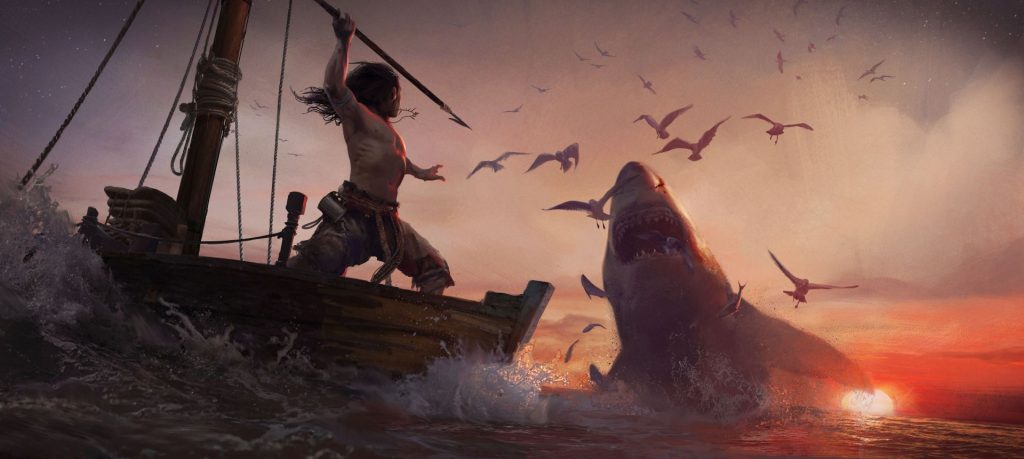
“Maybe Skull and Bones is another base for the developer to build on and revamp over the years. For now, it’s just not worth sticking around to find.”
While the Skull and Bones presentation is appealing in parts, the overall experience is mediocre. There are several areas where it’s decent, though not particularly great and others where it fails, sometimes nonchalantly and other times spectacularly. Perhaps its greatest tragedy is being so exceedingly bland.
So much time, money and heartache went into this, and at best, it’s another middling live-service title that does nothing interesting with the concept, let alone improve on the various issues. Let’s not start on the constant pop-ups for Legendary Heists, Cutthroat Cargo and Hostile Takeovers or the lack of quality-of-life features like selling directly from your cargo.
If you like sailing around in a ship with some pirate theming and shooting other ships all day while couriering things around, this might be for you. Repetitive gameplay, irritating pop-ups, almost non-existent story, lackluster yet grindy endgame and core issues aside, there is a significant amount of content. Maybe Skull and Bones is another base for the developer to build on and revamp over the years. For now, it’s just not worth sticking around to find.
This game was reviewed on PlayStation 5.


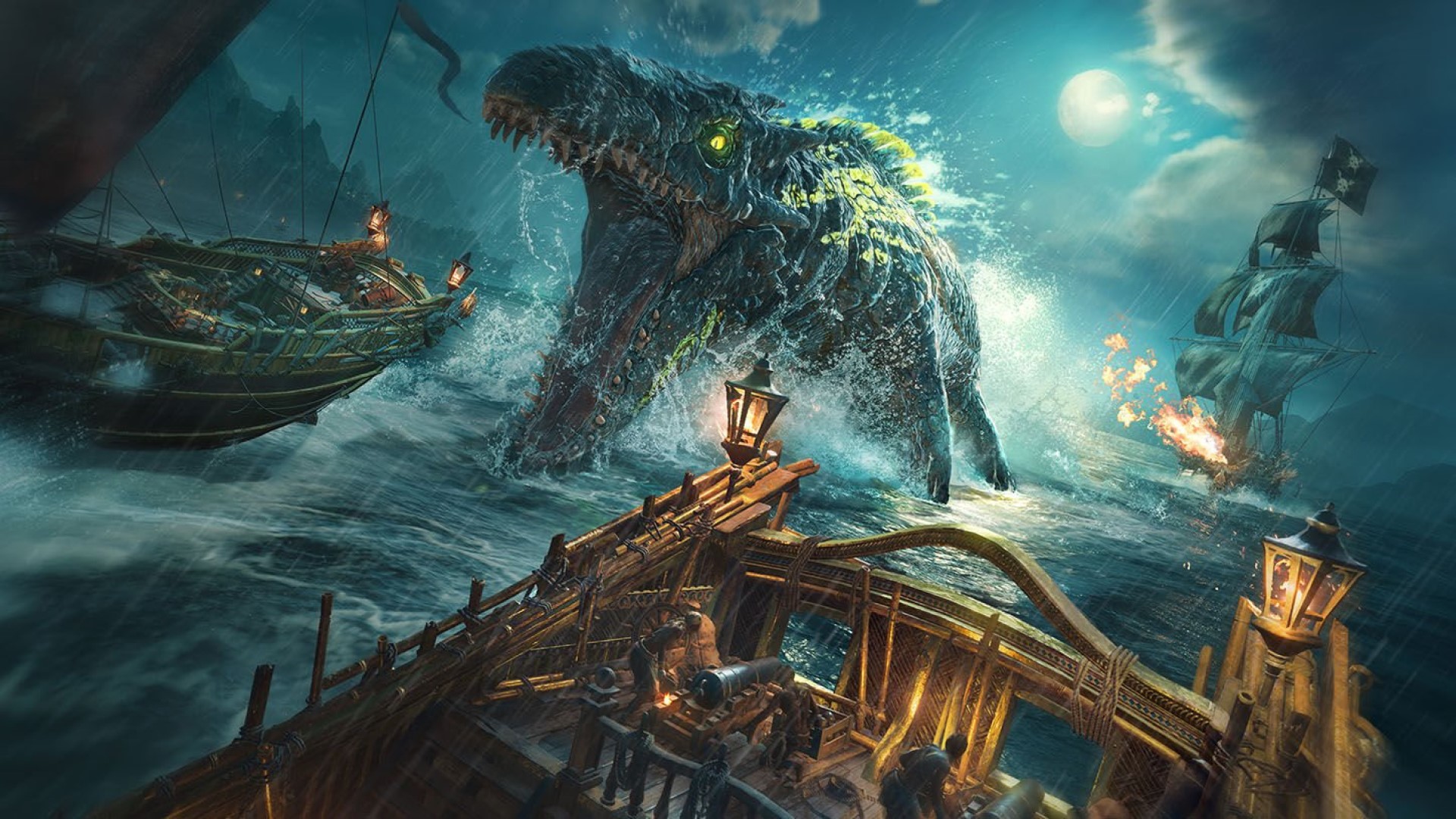
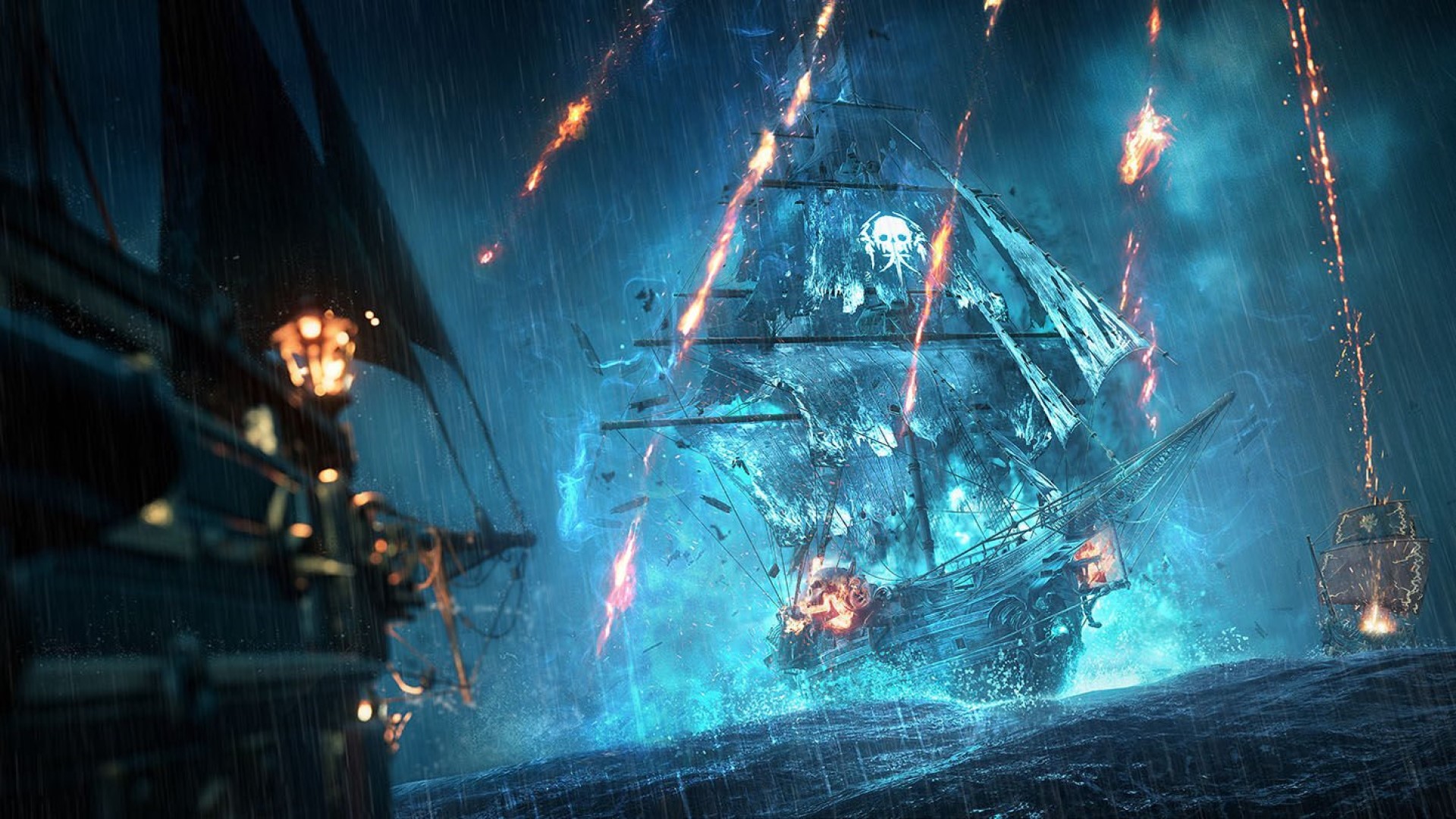
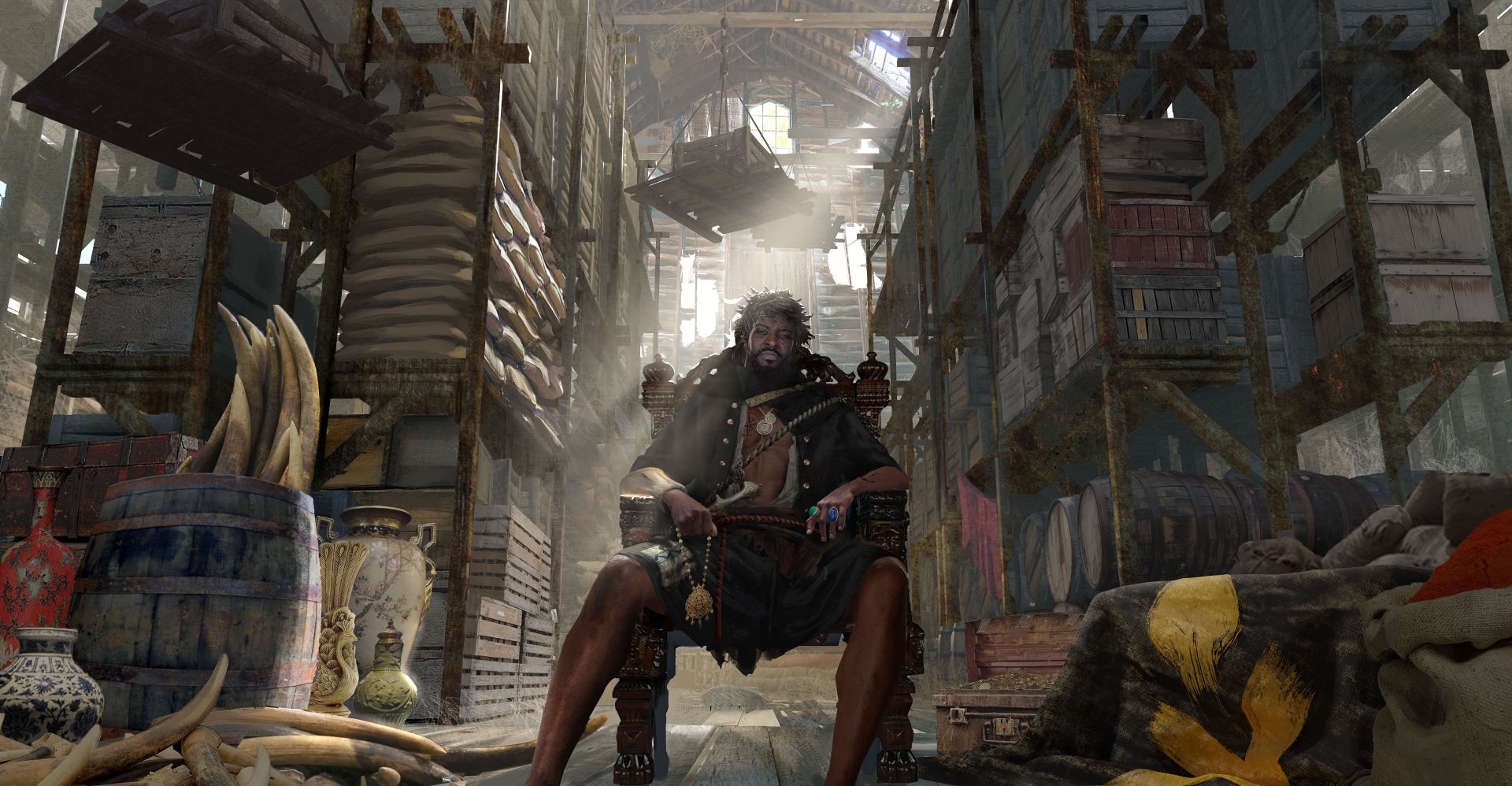
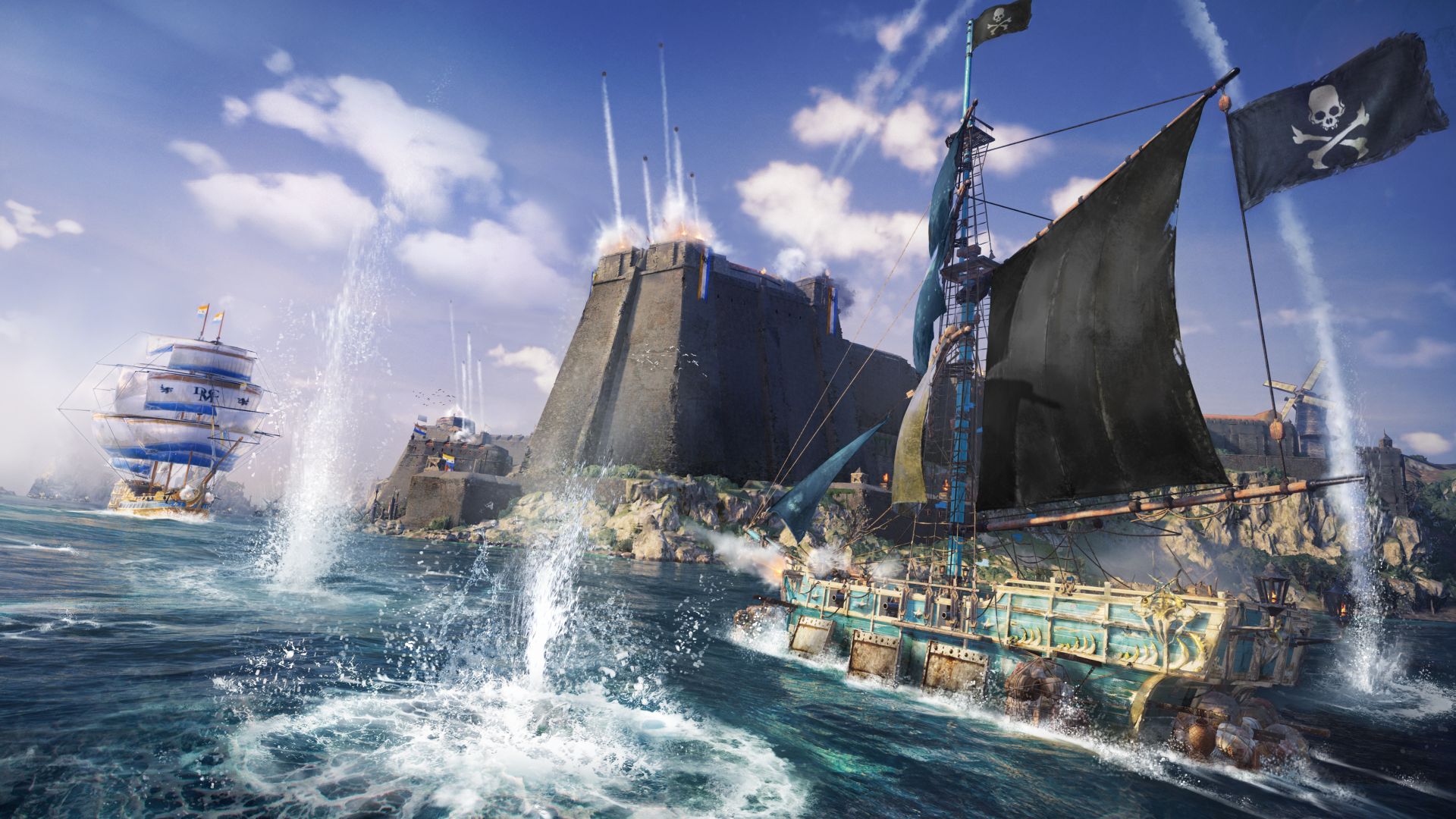
Comments are closed.